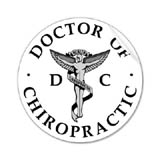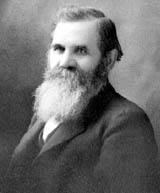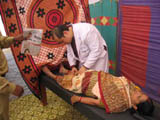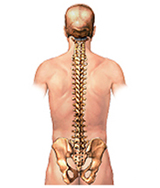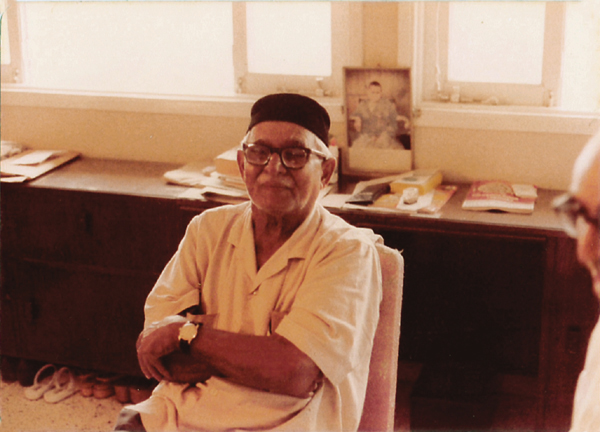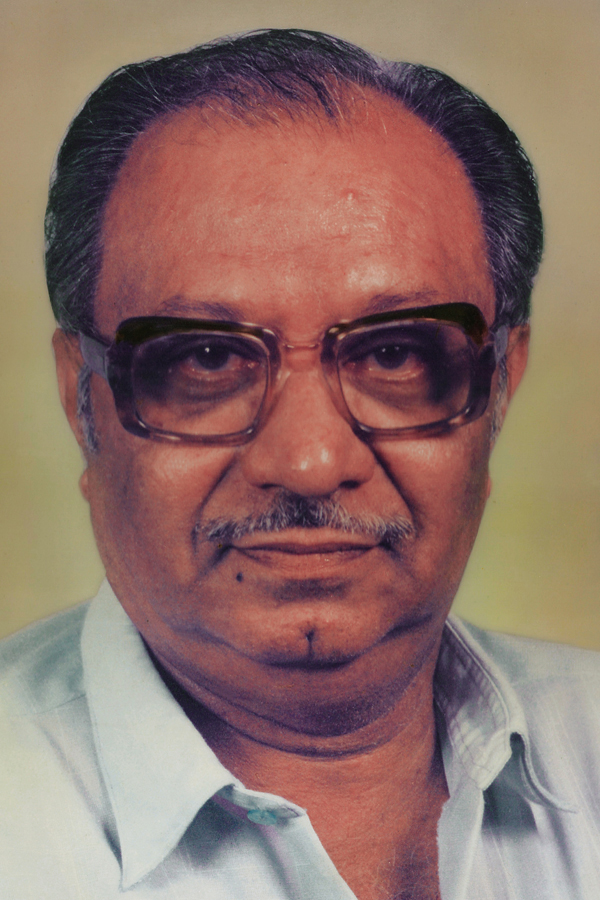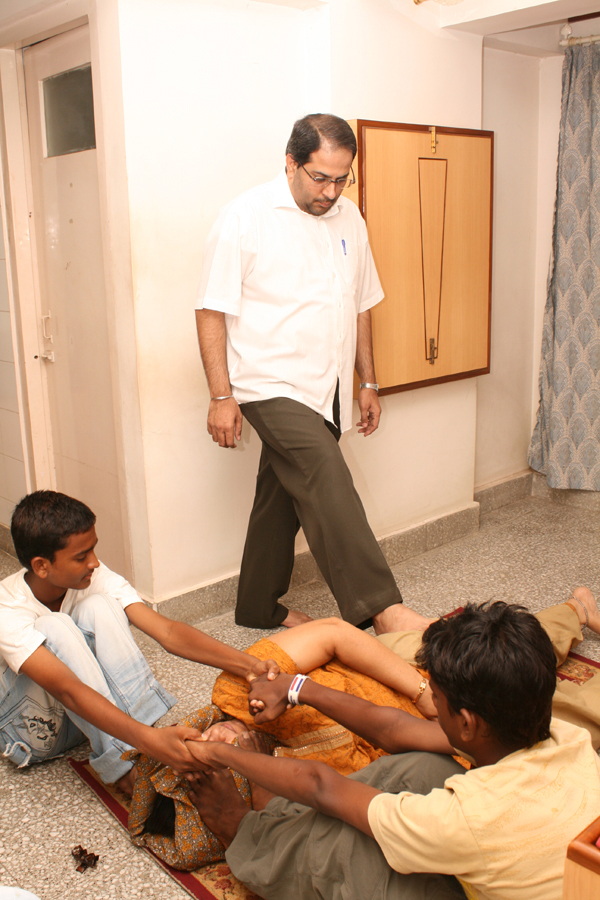Traditional healing
The traditional Parsi-Zoroastrian hadvaid – a historical perspective
Abstract
This article studies the heritage of the traditional hadvaid in the Parsi-Zoroastrian community and shows how this tradition pre-dates what the world today knows as chiropractic. The article concludes with some interesting, first-hand anecdotes and a background on two of the famed and perhaps the greatest exponents of the Parsi-Zoroastrian hadvaid tradition.
Introduction
“In numbers, Parsis are beneath contempt, but in contribution, beyond compare … (1)”
The traditional Parsi-Zoroastrian hadvaid is a shining example of this immortal quote with reference to the minuscule Parsi Zoroastrian community, made by none other than Mahatma Gandhi in one of his speeches, way back in 1924.
Very similar to a chiropractor, the traditional Parsi-Zoroastrian hadvaid is a chiropractic healer who is gifted or skilled in the art and science of manipulative therapy to treat disorders pertaining to the bones and nerves in the human body. It would be safe to say that a traditional Parsi-Zoroastrian hadvaid is a non-DC (Doctor of Chiropractic)-designated chiropractor.
Tracing the hadvaid tradition right from the pre-Gāthic1 times of the Prophet, Spitaman Asho Zarathushtra who propounded Zoroastrianism in ancient Persia or what’s today’s Iran and parts of Russia, the article explains how this tradition evolved since the early/late 19th century in India in the minuscule Parsi-Zoroastrian community.
In trying to provide a historical perspective on the same, the author also tries to trace the origin of the term hadvaid and bring out many of the similarities between the traditional hadvaid and the professionally qualified DC of today.
Perhaps the earliest known record of the traditional Parsi-Zoroastrian hadvaid may well have been the founder of Zoroastrianism, the Prophet, Asho Zarathushtra. Legend has it that it was only Asho Zarathushtra who, through the power of manthravani or prayer and touch, was able to miraculously cure the favourite horse of King Vishtaspa of some mysterious illness that had caused it to simply collapse.
Hadvaid
Literally translated from Gujarati, the mother-tongue of the Parsi-Zoroastrians in India, it means a “bone-doctor” (Had = bone and vaid = ‘doctor’). Another anglicised name by which the traditional Parsi-Zoroastrian hadvaid is also known is ‘bonesetter’.
A hadvaid is primarily a ‘gifted’ chiropractic healer, skilled in the ‘art’ of bone-setting, who through his highly evolved sense of touch, is able to diagnose and cure disorders pertaining to the bones and the nerves of a human body without surgery, very much how a classical chiropractor does. Like a chiropractor, a hadvaid too sets, adjusts or manipulates the joints or the vertebrae in the spine to set right a disorder, using his hands or his foot (for spinal manipulations).
The traditional Parsi-Zoroastrian hadvaid relies on a highly developed sense of touch. Relying on the evidence of his ‘touch’ and ‘feel’, the hadvaid palpates the muscles and ligaments of the patient to understand the problem and uses manipulation to set bones into position or heal fractures. In the case of some hadvaids, this may be followed by massage therapy where indicated or even anti-inflammatory applications of poultices or laeps as is the case with some hadvaidss even today.
Earlier, hadvaidss did not depend too much on oral medicines. But as they evolved, some began to supplement their treatment with time-tested oils, balms and homeopathic or AAyurvedic medicines.
Depending on individual circumstances, a traditional Parsi-Zoroastrian hadvaid may treat patients afflicted with spinal disorders such as back pain, lumbago, sciatica, spondolysis, slipped disc, etc. or conditions like rheumatism, arthritis or maybe even some types of dislocations / fractures and in rare cases, even paralysis or polio. The hadvaid's’s success rate — as many of the beneficiaries of a traditional Parsi-Zoroastrian hadvaid's’s services would testify — is rather high.
So, to put the work of the traditional Parsi-Zoroastrian hadvaid in proper perspective in the 21st century, he is essentially what the world today knows as a chiropractor.
What is chiropractic?
In 2005, The World Health Organisation (WHO), in its Guidelines on Chiropractic,(2) defined it as:
“A health care profession concerned with the diagnosis, treatment and prevention of disorders of the neuro-musculo-skeletal system and the effects of these disorders on general health. There is an emphasis on manual techniques, including joint-adjustment and/or manipulation with a particular focus on subluxations.”
Before the WHO came up with this definition for chiropractic, the dictionary definition of chiropractic, approved by the assembly of the World Federation of Chiropractic (3), the Chiropractic profession’s global governing body convened at Auckland, New Zealand on May 19, 1999 defined chiropractic as follows:
“A health profession concerned with the diagnosis, treatment and prevention of mechanical disorders of the musculoskeletal system, and the effects of these disorders on the function of the nervous system and general health. There is an emphasis on manual treatments including spinal manipulation or adjustment.”
Thus it will be seen from the above definitions of modern-day chiropractic, that ‘manual adjustment’ or manipulation of the joints or the spine form the crux of chiropractic which is essentially what a traditional Parsi-Zoroastrian hadvaid does.
Therefore, it would not be incorrect to state that the practice of a traditional Parsi-Zoroastrian hadvaid, in many ways closely resembles that of a chiropractor in that both use similar techniques of manual adjustment/manipulation to treat specific disorders of the bones/nerves of the human body.
History of chiropractic
Modern-day chiropractic originated in 1895 in the USA. The term ‘chiropractic’ was coined by D.D. Palmer, who was born in Canada and who later migrated to the US. He is widely regarded as the founder of modern chiropractic. The adjustments which he called ‘hand treatments’ led him to derive the term ‘chiropractic’- from the Greek words, cheiros = ‘hand‘ and practic = ‘the practice or operation of‘.
Today’s chiropractors, especially in developed countries such as the US, UK, Canada, Australia, New Zealand and parts of Europe, are designated as DC or Doctor of Chiropractic after ‘studying’ to become a chiropractor at accredited chiropractic college.
However, it is interesting and important to note that the founder of chiropractic was himself not a DC.
So in that sense, while a traditional Parsi-Zoroastrian hadvaid is, like Palmer, a chiropractor, he need not necessarily be a DC. Similarly, a duly trained, traditional Parsi-Zoroastrian hadvaid is also skilled at performing manual adjustments or manipulations of the joints, just like a DC.
“The practice of chiropractic includes a moral obligation and a religious duty”,
wrote Palmer (4) in his book, The Chiropractor. This shows the nobility of the profession as envisaged by its founder, traces of which are still evident in the practice of the traditional Parsi-Zoroastrian hadvaid.
But since its inception in 1895, over the last century and more, chiropractic, as envisaged by Palmer and as it exists today with all its advancements and regulations, has undergone a sea-change with commercial consideration and regulation of the profession becoming the cornerstones of a chiropractic practice whereas the practice of the traditional Parsi Zoroastrian hadvaid by virtue of its simplicity, its charitable outlook, its competence and safety may be described as being more aligned to Palmer’s philosophy of chiropractic.
Following the period of apprenticeship that a hadvaid goes through (which in most cases would be the equivalent of or perhaps even more than the chiropractic degree courses in many chiropractic colleges) means that he would, in most cases, be as skilled as – if not more – than a qualified DC. To clarify, this is not to suggest that a traditional Parsi-Zoroastrian hadvaid might, in any way, be superior to a DC or vice-versa. Both have an important and unique role to play. Both do wonderful work in relieving patients of pain without surgery. Like the traditional Parsi-Zoroastrian hadvaid, there are several instances of DCs too giving of their time and effort to serve society at large.
It is about time the recently formed Indian Association of Chiropractic Doctors, which does not have a single indigenous chiropractor as its member (their current membership comprises mainly foreigners or foreign-educated Indian DCs), recognised the traditional Parsi-Zoroastrian hadvaidss as the first chiropractors in India and admited them as members. Thus, at least in an Indian context, the traditional Parsi-Zoroastrian hadvaid and the chiropractor would be treated at par and be able to work in a unified manner.
History of hadvaid
Unfortunately, no documented records exist for the traditional Parsi-Zoroastrian hadvaid in India. The tradition has continued by way of a teacher training his disciple by word, action and life. But it would be correct to assume that the tradition of the Parsi-Zoroastrian hadvaid would pre-date 1895, i.e. the year recorded in history as the beginning of chiropractic. And the legend of Asho Zarathushtra would only serve to add to its credibility.
A study of the evolution of the hadvaid tradition within the rapidly declining micro-minority Parsi community (its global population is estimated to be well under 100,000) conducted over the past few years as part of the PARZOR (PAR = Parsi; ZOR = Zoroastrian) Research Project funded by the UNESCO has yielded some interesting insights (5).
There are some unique characteristics of the traditional Parsi-Zoroastrian hadvaid tracing back to the mid-20th Century that bear mentioning. One is that almost all of them originated from or around south Gujarat, i.e. the region between Valsad (earlier Bulsar) and Ahmedabad. Secondly and perhaps the more important features of the traditional Parsi-Zoroastrian hadvaidss are their efficacy, affordability of the treatment and the success-rate.
By and large, the aspect of charity or community service is in some ways intertwined with the practice of some of the traditional Parsi Zoroastrian hadvaidss – more in line with Palmer’s philosophy of chiropractic.
The ‘kick’ that cures
Before orthopaedists and physiotherapists became a part of the routine medical dictionary, the Parsi-Zoroastrians relied, along with many others, on the ‘kick’ that cured for ailments of the spine.
The kick is a method of performing a spinal adjustment or manipulation where, instead of hands/fingers, the hadvaid uses his foot. This method is almost an art form and is a unique and distinct feature of the Parsi-Zoroastrian hadvaid tradition. Today, there is only one – yes, just one – Parsi Zoroastrian chiropractic healer in the world who practises chiropractic in a purely honorary capacity and uses this highly efficacious method to perform a spinal manipulation with his leg.
The technique of the ‘kick’ employed by the traditional Parsi-Zoroastrian hadvaid may find comparison in chiropractic in the term,
“long-lever, high-velocity spinal manipulation (6)”.
The kick is based on the principles of leverage and ‘range-of-motion’.
It may be described as a method of spinal manipulation in which the traditional Parsi-Zoroastrian hadvaid places his foot on or around the hip of the patient lying down on the floor, on each side at a time to stretch or loosen several vertebrae with a forceful, high-velocity thrust that stretches the spinal column beyond its normal range of movement in order to increase its mobility. This form of spinal manipulation is usually accompanied by an audible sound like a pop or a click or a series of similar-sounding pops and clicks. The whole procedure lasts for less than 30–45 seconds, with the actual act of ‘kicking’, less than 5 seconds each.
While ‘kicking’ a patient, the skill of the traditional Parsi-Zoroastrian hadvaid lies in correctly applying the principle of leverage, placing his foot and judging the right degree of force in the thrust. Even the decision on whether or not a particular patient is suitable to be administered the kick is a critical one. For, at times, success may lie in declining to kick the patient.
While the whole process of kicking the patient appears to be deceptively simple — it is not. In fact, it requires huge skill and calls for intense concentration and an extremely high degree of precision and accuracy on the part of the hadvaid every time he kicks a patient.
Generally a kick is not repeated on the same side of the patient once it has been delivered. So it is important for the patient and the hadvaid to be in sync with each other and for the patient to have faith in the hadvaid. Remember that the hadvaid has just one go. So it is important that he gets it right the first time round itself. There is simply no margin for error.
Some British chiropractors at the Chiropractic Clinic at the University of Surrey in Guildford, Surrey, to whom the ‘kick’ was demonstrated in 2003 by Dr. Kayomarz Patel, marvelled at the high level of precision that has been mastered by the traditional Parsi-Zoroastrian hadvaid.
Perhaps the two greatest exponents of not only the ’kick’ but, indeed, of the tradition of the Parsi-Zoroastrian hadvaid in India were the late Dr. Manchershaw Madhivala (Suraliwala) and his nephew, the late Dr. Jal H. Amaria, who is also the guru of Dr. Kayomarz Patel.
Hadvaid and charity
The unique and perhaps the most striking feature of all the above is that they all practised and even today practise as hadvaidss only for charity, i.e. as a form of service to the community without any differentiation of caste, creed or status — the moral obligation that Palmer refers to.
None of them ever charged or charge fees to any of their patients for rendering this service, except the cost of medicines which includes oils or balms, homeopathic tablets and some AAyurvedic powders and this comes to roughly just around US $4. These medicines have been proven in their efficacy for nearly 100 years. The whole course of medicines lasts for 15 days or more after which, depending on the need of the patient, the treatment may be required to be repeated. In some cases even the cost of medicines is waived if the patient cannot afford these costs.
Another interesting tradition with these three hadvaidss is that even the medicines are freely given to any patient who happens to be a member of the clergy of any religion, a doctor, from the defence services, the police or fire brigade.
From the common man on the street to even well-known doctors, actors, sportspeople, corporate executives, industrialists, high-ranking union or state ministers and bureaucrats, even a former President of India, people from every strata of Indian society and even overseas have availed of the service of the traditional Parsi-Zoroastrian hadvaid at some point of time.
Great traditional hadvaids
The fame and reputation of both Dr. Madhivala and his nephew, Dr. Amaria, may be gauged from the fact that together during their respective lifetimes, they would have, easily put in over 90 years of practice as traditional hadvaidss and treated at least over half a million patients or more. Some of the people who have been cured by either of these two great souls would vouch that there was a certain inexplicable saintly aura about these two noble human beings.
Dr. Madhivala’s practice as a traditional Parsi-Zoroastrian hadvaid grew in fame in India around the middle of the 20th Century — around the same time that chiropractic gained ground in the West. The PARZOR website reports that he was even provided with a ‘Silver Pass’ on the railways by the authorities because of his great gift of healing and charity. He travelled the length and breadth of Gujarat, healing fractures and dislocations, even slipped discs and other serious problems, with his poorer patients lining up to meet him at the railway stations on the route.
Dr. Madhivala had a huge, sprawling house in the village of Madhi near Bardoli outside Surat in Gujarat in western India on the Surat–Bhusaval (Tapti Valley Railway) rail link and which, at the peak of his practice, almost got converted into a hospital of sorts. The former India Test cricket captain, noted philanthropist and owner of the Hindustan Spinning & Weaving Mills, Vijay Merchant, had made special arrangements for Dr. Madhivala to regularly travel all the way from Madhi to Mumbai and hold a clinic in a space especially dedicated at his mill premises where hundreds of patients used to line up for treatment.
In the case of the Mumbai-based Dr. Jal Amaria, consider the following statistics over just a 15-year period (out of his practice of over 40 years) counting backwards from his death in November 1997 and do your own maths.
On average, Dr. Amaria saw about 300 patients every Sunday and around 200 patients every Wednesday at his home that also doubled up as his clinic in Mahim, Mumbai. Add to that figure approximately another 200-250 patients a month at various other assorted clinics in and around Mumbai. That works out to almost about 25,000 patients per year, every year for 15 years or over half a million patients. No other chiropractor — or indeed any other medical practitioner — can even come close to being able to bring relief to so many during his career.
Going by sheer numbers alone, the phil-anthropy and greatness of both Dr. Madhivala and Dr. Jal Amaria in terms of their contribution to society as human beings first and then as traditional Parsi Zoroastrian hadvaidss is beyond imagination. One cannot recall a similar parallel in any other medical profession in terms of benefiting society that even comes close to these numbers in a lifetime.
Verily, it has been said… Parsi, thy name is charity.
The future
Other traditional Parsi-Zoroastrian hadvaidss may be found on the PARZOR website. Dr. Kayomarz Patel is perhaps the only traditional Parsi-Zoroastrian hadvaid today who practises as a hadvaid in Mumbai solely as a form of charity and also delivers the “long-lever, high-velocity spinal manipulation”, simply called the ‘kick’, as the principal technique in spinal manipulation.
As Dr. Kayomarz Patel tries to continue to keep alive the tradition of his guru and mentor, the great Dr. Jal Amaria, the ubiquitous ‘Madhivala liniment’ and the ‘Madhivala pain balm’, which are today available as OTC items of medicine at local drugstores, are an enduring legacy of Dr. Madhivala’s, kept alive by one of his relations, Dr. B.E. Patel, a homeopath by profession and a former Principal at the College of Homeopathy at Vile Parle (West) in Mumbai.
As of January 2013, there are 84,000 DCs in the world (which is roughly the size of the global Parsi-Zoroastrian community today) with about 61,500 in the US alone. It was estimated that around 320,000 chiropractors are needed the world over with over 65,000 required in the US and about 14,500 needed in India alone (7).
Today as chiropractic is thriving worldwide — it is the 3rd biggest medical profession in the US, after allopathy and dentistry — the traditional Parsi-Zoroastrian hadvaid is nearly extinct with maybe just over 10–15 of them scattered across Mumbai and some parts in the state of Gujarat in western India. In their time, both Dr. Madhivala and Dr. Amaria were an institution in themselves. Each of them had a team of 15–20 helpers/volunteers who assisted them in their clinics /camps with 3-4 persons among them forming the core team of volunteers. Sadly, none among the Parsi youth of today either have the aptitude or ability to practise as a hadvaid.
Chiropractic is neither an easy subject to be taught nor can it be easily mastered. Performing adjustments with one’s own hands is very much a skill that should either be in-born or acquired through experience.
Most students admitted to a chiropractic degree programme in an accredited chiro-practic college may eventually pass the exams and go on to become ‘qualified DCs’. But not all possess the natural aptitude or the high level of skill required for being a great chiropractor. What decides whether a student of chiropractic will be a successful chiropractor is her/his ability to sense, through his touch and the skill of performing an adjustment, so as to bring relief to the patient. And this is where the traditional Parsi-Zoroastrian hadvaid or the non-DC-designated chiropractic healer scores over a professionally qualified DC; in having the ability — in most cases — to bring about lasting and sometimes quick relief to his patients.
There is a growing need — now, more than ever — to get traditional Parsi-Zoroastrian hadvaidss — or whatever is left of them — to quickly integrate with and be recognised as a non-DC designated chiropractor by the growing global chiropractic movement while retaining their originality and uniqueness of the traditional Parsi-Zoroastrian hadvaid. This is the only way the traditional Parsi-Zoroastrian hadvaid heritage can be preserved and perhaps furthered. If this does not happen soon, the precious, intangible heritage of the traditional Parsi Zoroastrian hadvaid may perhaps be lost forever and be consigned to history.
References
1. Mahatma Gandhi. Young India (issue dated 23 September 1924) Collected Works of Mahatma Gandhi.
2. Guidelines on Chiropractic. Weblog. [Online] Available from: www.wfc.org (accessed on 7 June 2013)
3. Definition of Chiropractic. Source. Weblog. [Online] Available from: www.wfc.org (accessed on 7 June 2013)
4. DD Palmer. The Chiropractor. Chapter titled: ‘The Moral and Religious Duty of a Chiropractor.‘ p.2
5. Parzor. Weblog. [Online] Available from: http://www.unescoparzor.com/index.php? option=com_content&view=article&id=21 &Itemid=61(accessed on 7 June 2013)
6. Stephen Barrat. Glossary of Chiropractic terms. [Online] Available from: http://www.chirobase.org/01General/chiroglossary.html(accessed on 7 June 2013)
7. Chiropractic statistics as of January 2013. [Online] Available from: www.chiropracticdiplomatic.com/country/worldlist.html(accessed on 7 June 2013)
Dr. Kayomarz Patel is an experienced chiropractic healer with clinical experience of over 25 years. From a very early age, he was trained in chiropractic for 14 years under his guru, late Dr. Jal H. Amaria of Mumbai.
Dr. Kayomarz has been in independent practice solely as a form of charity since 1997, after the death of his guru. To this day, he carries on the tradition of his guru by rendering free chiropractic service twice a month at a community centre clinic in suburban Mumbai, India, which benefits an average of over 150 patients a month.
Share with us (Comments,contributions,opinions)
When reproducing this feature, please credit NAMAH,and give the byline. Please send us cuttings.

